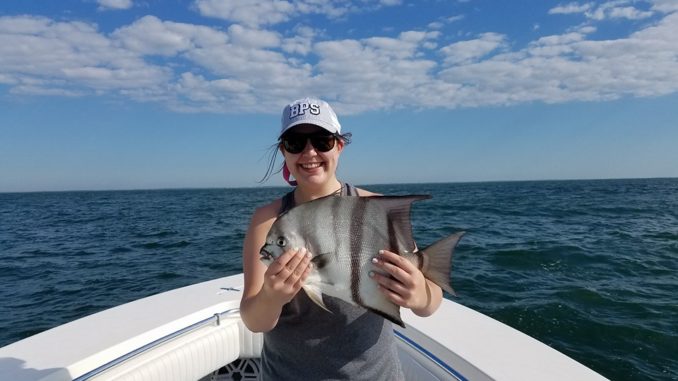
Spadefish are biting on nearshore wrecks and reefs
It’s spadefish time on the near shore wrecks and reefs along South Carolina’s coast, and anglers are having a field day with these saltwater panfish in areas like the 4KI and Lowcountry Angler reefs. The bites come quickly once the fish have been located.
Capt. Robert Olsen of Knot@Work Fishing Charters has been making plenty of his customers happy with the recent crop of spades. Olsen (843-442-7724) said lady luck has been on the side of his most recent trips, with female anglers outfishing their male counterparts.
Most spadefish trips start off with collecting some cannonball jellyfish, and once anchored over some structure, a string of four or five whole cannonballs are threaded onto a nylon stringer or wire coat hanger, then lowered down to the structure. Once the fish start nibbling on these, they are raised up just below the surface.
With the string of jelly balls, the spadefish come up, continuing to nibble on the delicacy. Now it’s time for anglers to get busy. While slivers of jelly balls are good baits, Olsen said large peeled shrimp are also good baits, and they often keep the smaller spadefish from biting.
With the spadefish just a few feet away from the boat nibbling on the jelly balls, most first-time anglers expect a short fight from a fish they entice with their bait. It looks as though setting the hook will simply yank the fish straight into the boat, but that’s far from what happens.
Once a spadefish is hooked, it runs like a fish that is many times its size, stripping off drag and diving for the bottom. It’s one of the hardest-fighting fish many anglers will encounter, especially for its size.
Capt. Robert McCarley of Reel Tight Charters in Georgetown said he’s also getting his share of spadefish action along the southern portion of the Grand Strand. He said the key to finding them is in loading up with jelly balls.
McCarley said the Eleven-Mile Reef, Paradise Reef, Pawleys Reef, North Inlet Reef, Georgetown Reef, and the Georgetown Nearshore Reef are all good places to look for spadefish, and he said anglers shouldn’t waste time at one if it doesn’t produce fairly quickly.
“Some reefs hold spadefish one day, but not the next. If you don’t get bit within about 30 minutes of dropping down your string of jellies, it’s best to pull anchor and head to another reef. It can take two or three stops to find them, but it’s worth it. Once you find them, you’re going to know it pretty quick,” he said.




Be the first to comment